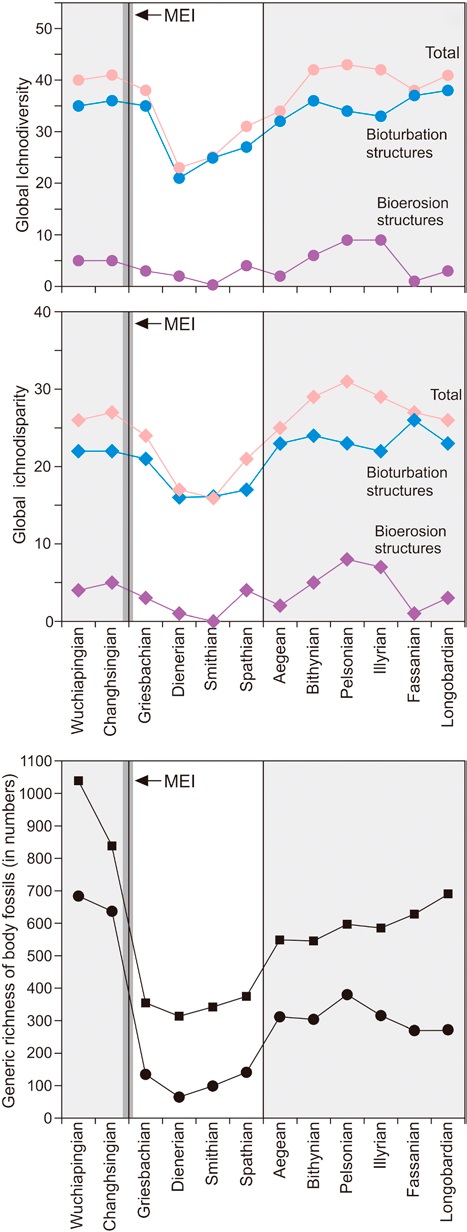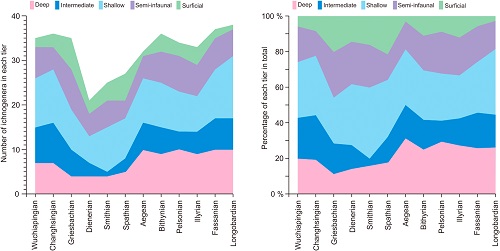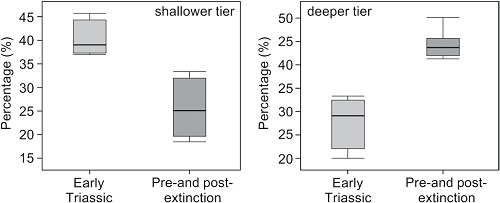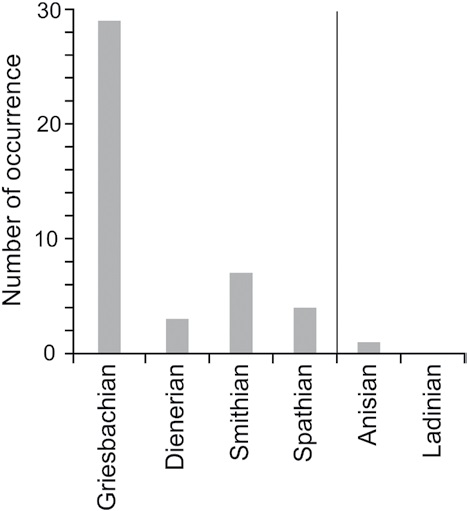The end-Permian Mass Extinction (EPME) is widely considered to record the largest biodiversity loss coupled with the most severe ecological impact in Earth history. More than 90% of the marine species were killed in less than 200 000 years. In the aftermath of this catastrophe, the Early Triassic was characterized by large, frequent fluctuations in carbon isotopes, extremely high sea-surface temperatures, and widespread anoxic conditions, and even oceanic acidification in the global oceans. The subsequent marine biotic recovery in the Early Triassic has been delayed for a prolonged interval of around 6 million years due to persistent warming and anoxia. Studying the biotic recovery after the biggest mass extinction would help us understand the responses and evolutionary mechanism of ecosystems through extreme environmental changes, but also give implications to the management of modern marine ecosystems under global environmental change as those abovementioned environmental extremes are adversely affecting the livelihood of marine organisms.
The impact of the EPME on behavioural aspects of the infauna, as reflected in the global abundance and diversity of trace fossils, is less explored. In many instances, trace fossils represent the behavioural records of soft-bodied organisms that have null to very limited preservation in the fossil record. They often supply vital ecological information on ancient communities not available from body-fossil documentations.
In order to better understand the behavioural responses of trace makers to environmental perturbations, Dr. LUO Mao and his collaborators including Prof. Luis A. Buatois from University of Saskatchewan, Prof. SHI Guangrong from University of Wollongong, and Prof. CHEN Zhongqiangfrom China University of Geosciences (Wuhan) has compiled a global Permian?Triassic trace-fossil database. The research aims to give a comprehensive review of long-term ichnodiversity and ichnodisparity changes following the EPME, and assess how infaunal organisms behaved in response to the extinction crisis and during the biotic recovery intervals. The results have been published online in the GSA Bulletin, an international comprehensive geology journal.
The study, led by Dr. LUO Mao, has depicted the global ichnodiversity and ichnodisparity change from late Permian to Middle Triassic comprising twelve time slices. Importantly, they found that global ichnodiversity and ichnodisparity maintained their pre-extinction level after the end-Permian mass extinction. In particular, late Permian global ichnodiversity and ichnodisparity maintained their level until the Griesbachian, followed by a sharp loss in the Dienerian stage. This result in diversity of trace fossils is in contrast to that of body fossils. A further analysis of the tiering composition of ichnogenera from each time slices showed that Early Triassic trace fossils are dominated by shallower tiered ichnogenera when compared with pre- and post-extinction trace fossil compositions. Furthermore, such difference in tier composition is statistically obvious.
Dr. LUO Mao and his collaborators interpreted that such global ichnodiversity change might have be a taphonomic effect caused by the wide-spread occurrence of microbial mat substrate during the Early Triassic. The development of firm substrates enhanced by microbial mat enveloping, aiding the preservation of shallow-tiered trace fossils, and maintaining the high ichnodiversity level in the earliest Triassic.
The dataset, and the ichnodiversity trends revealed by Dr. LUO Mao and his collaborators suggested that the high ichnodiversity and ichnodisparity in the earliest Triassic is best explained as a taphonomic artifact. The sustained high ichnodiversity in the Griesbachian, combined with the preferential occurrence of shallow-tier bioturbation structures suggests limited mixing of seafloor sediments, which have drawn parallels with substrate conditions proposed for Ediacaran-Fortunian strata.
The research has been jointed supported by the Strategic Priority Research Program of Chinese Academy of Sciences, the CAS Talents Program, and the National Natural Science Foundation of China.
Reference: Luo, M*., Buatois, L.A., Shi, G.R., Chen, Z.Q., 2020. Infaunal response during the end-Permian mass extinction. https://doi.org/10.1130/B35524.1.

Line chart diagram summarizing variation in global ichnodiversity (a) and ichnodisparity (b) in comparison with the global generic richness of body fossils (c)

Change in ichnofossil tiering levels from late Permian to Middle Triassic expressed as area plots

Box plots comparing the percentage of different tiering groups between Early Triassic and pre- (late Permian) and post-extinction (Middle Triassic) intervals

General trend of relative abundance of microbialites in the Lower–Middle Triassic
Download:
